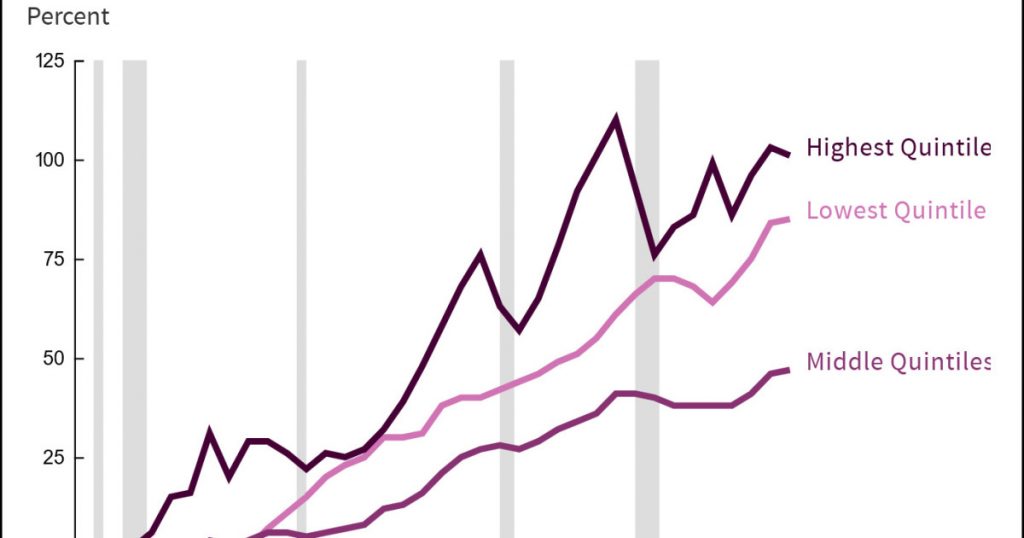A Middle-Class Agenda for Democrats
I’m trying to temporarily avoid the torrent of impeachment/corruption-related news that threatened to drown us over the weekend, so here’s something else to start the week. It’s apropos of nothing in particular, and has nothing to do with any specific Democratic candidate for president. It’s just something to think about.
As progressives, we have a natural tendency to focus our policies on the poorest and weakest among us. This is, needless to say, admirable, but it’s also politically dangerous if it’s taken too far and leads the middle classes to believe they’ve been abandoned.
This is where we find ourselves today. We spend about a trillion dollars a year on social welfare programs for the poor, an expansion of 300 percent since 1980. In inflation-adjusted terms, this represents an increase from $3,000 per poor person to $12,000 per poor person. This chart from the Congressional Budget Office shows what this means:
Thanks to the demise of unions and the nature of our economy, the affluent have done very well. Thanks to the big increase in social welfare programs, the poor have done well too in relative terms. It’s the working and middle classes that have done the worst—and it’s not close. What’s more, the rate at which they’ve lost ground to the top and bottom has accelerated since 2000.
Is it any wonder they feel left behind even if they make more in absolute terms than the poor? The best example of this is the bitter observation from many of them that they wish they were poorer so they’d qualify for Medicaid instead of having to pay for an Obamacare policy with big deductibles and out-of-pocket maxes in the thousands of dollars.
So what if we decided to focus our attention tightly on the working and middle classes? What would a Democratic agenda look like? Something like this:
Instead of Medicare for All, double the subsidies for Obamacare and reduce the maximum allowable deductible and OOP expenses at the silver level. The new subsidy levels should be set so that families with incomes all the way up to the high double-figures would have to pay no more than about 5 percent of their income for premiums. This would cover virtually the entire middle class and would be affordable by nothing more complicated than repealing the Republican tax cut for the rich.
Propose a serious and aggressive pro-union plan. This would cost nothing, and it would primarily benefit the working class and the lower middle class. Figure out how to sell this in terms that make sense to ordinary workers, and if you don’t know how then ask Sherrod Brown.
Put forward a massive and detailed plan to build green infrastructure—solar, wind, grid upgrades, etc. This would address climate change and provide hundreds of thousands of middle-class construction jobs for every state in the country. Finance it with taxes on the rich.
Stay honest about hot-button social issues, but do your best not to talk about them a lot. In most cases it’s a lose-lose proposition.
You get the idea. These are things with limited costs that can be sold to the middle class as real, concrete benefits. At least, they can be if you know how to talk to ordinary people. And since, like it or not, middle-class workers tend to worry about spending and deficits, it’s appealing that these things can be financed in fairly ordinary ways, not via stupendous new taxes that barely sound plausible even to low-information voters.
And for those of you who are super sophisticated and want to point out that it hardly matters what anyone proposes since none of it will pass through a Republican-controlled Senate anyway—well, you’re wrong. It does matter. Ordinary voters don’t think about filibusters and Senate majorities and other niceties of the American constitutional order. They just want to know whose side you’re on. A presidential campaign is a chance to tell them.





